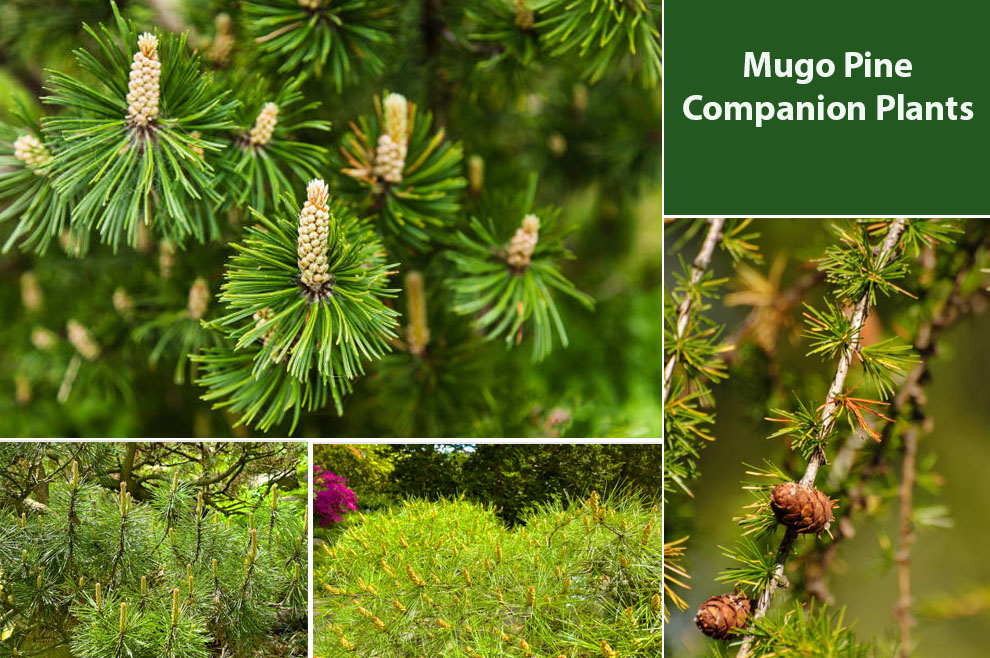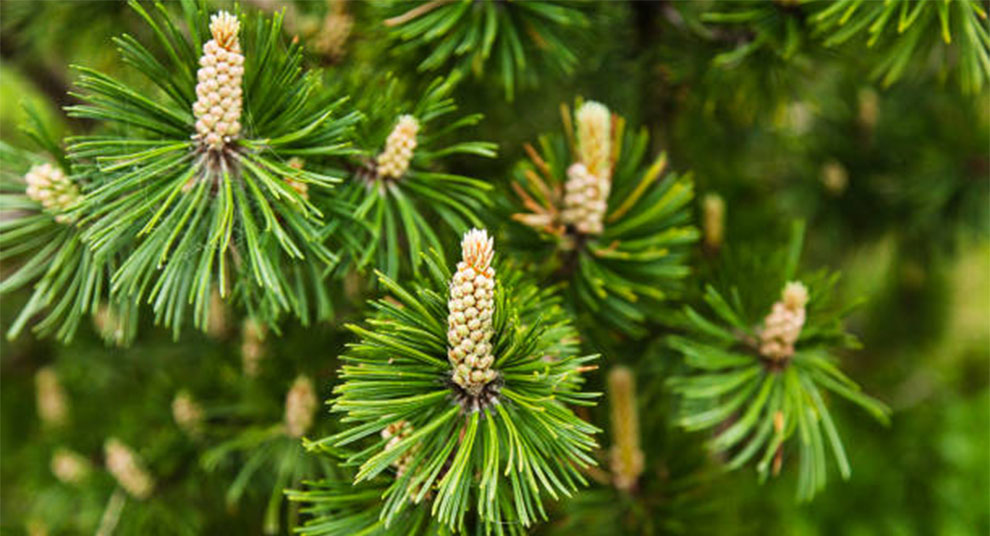Companion Plants for Mugo Pine: A Gardener’s Guide
Mugo pine’s ideal companion plants include salvia, lavender, coreopsis, azaleas, hydrangeas, feather reed grass, spring-blooming bulbs like daffodils, lilies, ferns, hostas, and variegated foliage plants. These selections offer diverse colors, textures, and benefits for a harmonious garden.

Mugo pine, with its evergreen charm and distinctive character, has long been a favorite in the world of gardening. Its compact size and rich green needles make it a versatile addition to any landscape.
But what if we told you that your mugo pine could become the centerpiece of a botanical masterpiece? The secret lies in choosing the correct mugo pine companion plants.
In this comprehensive guide, we will explore the art of pairing plants with mugo pine to create a harmonious and visually captivating garden.
Unveiling Mugo Pine: The Garden Star
Before we embark on our journey into companion planting, let’s get to know our star, the mugo pine. This evergreen beauty boasts a low, spreading habit and an array of cultivars, making it suitable for various garden settings.
Whether you have a small urban garden or a sprawling countryside estate, there’s a mugo pine for you.
Selecting Complementary Plants for Mugo Pine
Before you start picking out plants, consider these key factors for successful companion planting with mugo pine varieties:
1. Compatibility: Look for plants that thrive in similar growing conditions. Mugo pine prefers well-drained soil, so choose companions that share this preference.
2. Growth Habits: Consider the growth habits of both mugo pine and the companion plants. You don’t want one overshadowing or crowding out the other.
3. Seasonal Interest: Think about the seasons when your chosen plants will shine. Aim for a garden that offers year-round appeal.
Benefits of Choosing The Right Companion For Mugo Pines

Companion planting isn’t just about aesthetics; it’s a holistic approach to gardening that can yield numerous benefits:
- Enhanced Aesthetics: Pairing mugo pine with complementary plants can elevate the overall look of your garden. Think of it as creating a botanical work of art.
- Improved Soil Health: Certain companion plants can improve soil quality by adding nutrients, increasing organic matter, and enhancing microbial activity.
- Pest Control: Some companion plants can deter garden pests or attract beneficial insects that act as natural predators.
- Attracting Wildlife: Companion planting can attract pollinators, birds, and other wildlife to your garden, contributing to biodiversity.
- Creating Microclimates: Companion plants can create microclimates within your garden, providing shade, shelter, or moisture retention for both the mugo pine and its partners.
Now that we’ve set the stage, let’s understand which plants grow well with mugo pines.
What To Plant With Mugo Pine?
Now, let’s explore different categories of companion plants that pair beautifully with mugo pine.
Flowering Perennials and Shrubs
Adding flowering perennials and shrubs to your mugo pine garden can introduce bursts of color and attract pollinators. Consider these options:
- Salvia: With its vibrant blooms and drought tolerance, salvia is a fantastic choice. Varieties like ‘May Night’ and ‘Black and Blue’ can create striking color contrasts.
- Lavender: Fragrant and visually captivating, lavender thrives in sunny spots and pairs well with mugo pine. English lavender varieties are popular choices.
- Coreopsis: The cheerful blooms of coreopsis add a sunny disposition to your garden. ‘Moonbeam’ and ‘Zagreb’ are excellent choices.
- Azaleas: Shade-tolerant azaleas offer a burst of spring color. Their elegant flowers create a striking contrast against mugo pine’s evergreen backdrop.
- Hydrangeas: For those seeking a touch of vintage charm, hydrangeas in various shades of blue, pink, or white can be an enchanting addition.
Textural Wonders: Ornamental Grasses
If you’re keen on texture and form, ornamental grasses can provide a delightful contrast to mugo pine’s needles:
- Feather Reed Grass (Calamagrostis acutiflora): This graceful grass forms upright clumps with feathery plumes that sway in the breeze, creating a dynamic visual effect.
- Blue Fescue (Festuca glauca): The silvery-blue tufts of blue fescue add a cool, calming presence to your garden. They are especially striking when planted in masses.
Bulbs and Spring Blooms
To infuse early spring energy into your garden, consider planting bulbs and spring-blooming companions:
- Spring-Blooming Bulbs: Crocuses, daffodils, and tulips are classic choices that burst forth with color as winter retreats.
- Lilies: Graceful and fragrant, lilies come in various colors and heights, making them a versatile choice.
- Irises: Irises add elegance with their delicate petals and intricate patterns. They come in an array of colors to suit your palette.
Foliage Plants for Lush Greenery
For a garden that exudes a sense of calm and lushness, foliage plants are the way to go:
- Ferns: With their delicate fronds, ferns offer a touch of woodland enchantment. They thrive in shaded areas, making them ideal companions for mugo pine.
- Hostas: Known for their bold foliage, hostas come in an array of sizes and leaf colors. They are perfect for filling in spaces beneath mugo pine.
- Variegated Foliage: Consider variegated plants like variegated dogwoods or Japanese forest grass for added visual interest.
Creating Visual Harmony In Your Garden With Companion Plants for Mugo Pine
To ensure your garden is a true work of art, consider these strategies:
- Color Schemes: Plan your color palette carefully. You can go for complementary colors that create harmony or contrasting colors for a bold statement.
- Year-Round Interest: Aim for a garden that offers something to admire in every season. Think about the different stages of growth and bloom throughout the year.
Wildlife-Friendly Choices
Make your garden a haven for birds, butterflies, and beneficial insects:
- Attracting Birds and Pollinators: Include plants that provide food and shelter for birds and pollinators. Milkweed, for instance, is a favorite of monarch butterflies.
- Beneficial Insects: Certain plants, like yarrow and fennel, can attract beneficial insects like ladybugs and lacewings that help control garden pests.
Caring for Mugo Pine and Its Companions
To keep your mugo pine and companion plants thriving, remember these essential tips:
- Regular Pruning: Both mugo pine and companion plants may benefit from periodic pruning to maintain their shape and prevent overcrowding.
- Fertilization and Soil Care: Pay attention to your soil’s needs. Regular soil testing can guide your fertilization schedule. Adding organic matter like compost can improve soil health.
Troubleshooting and Common Challenges
As with any garden, you might encounter a few challenges:
- Dealing with Diseases and Pests: Keep an eye out for common garden pests and diseases. Early detection and intervention are key.
- Managing Competitive Growth: Monitor your garden regularly to prevent overcrowding and competition among plants. Sometimes, a little rearranging is necessary.
In conclusion, companion planting with mugo pine opens up a world of possibilities for your garden.
Whether you’re aiming for a burst of color, lush foliage, or a haven for wildlife, the art of pairing plants with mugo pine can help you achieve your gardening dreams.
So, roll up your sleeves, grab your gardening tools, and start creating a masterpiece that will bring joy to your garden and your heart for years to come. Happy gardening!
